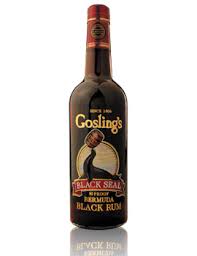Good all round Bajan rum from Berry Brothers & Rudd, that’s worth its price and is a good note on which to close your day.
What a relief it was to try this well-aged rum, and to find that its Fijian 8 year old cousin which I had tried some weeks back was indeed something of an iconoclastic aberration. There’s not much I could say about a line of rums of which I have only ever sampled three, and it would have been wrong to extrapolate based on such a small sample size. So it’s a happy matter that I can confirm the Bajan 13 year old is an excellent buy all round.
One of the pleasant things about independent bottlers who make a “series” is the consistency of presentation – think Renegade and their frosted glass bottles, or Plantation and the straw netting. It saves the reviewer a whole bunch of time not to have to assess a presentational score (I know the principle has its detractors, no need to mention it). So, tall bottle, well fitting plastic cork, simplistic labelling utterly consistent with the other BBR rums I’ve written about (the Fiji and the Port Mourant 1975).
The lead in on the nose was caramel and molasses, muted and light, yet with some heat as well (the rum is 46% after all). Vanilla undertones had their place before segueing into subtler aromas of pineapple and nicely ripened yellow gooseberries. A flirt of citrus (ripe orange peel) coiled around all of this, well balanced with preceding elements, and then the whole was wrapped up in emerging perfumes of delicate white flowers and a barely perceptible wine background. Quite intriguing, all in all.
I must comment on the excellent mouthfeel of this thirteen year old, honey-coloured rum: it’s medium bodied yet quite smooth for all that, with some heat imparted by the strength, but not so much as to become peppery or overly spicy. There’s a luxurious creaminess in the way this runs across the tongue, a certain chewiness that was very appealing. The rum was neither too sweet nor too salty (while possessing elements of both), and what I came away with was vanilla, honey, white chocolate, light coconut shavings and bananas, all held together by a softer citrus hint than the nose had promised. And at the tail end the odd sweetness of a strawberry lollipop, fading into a long clean finish redolent of chopped fruits and some saltiness. Really quite a decent product – I enjoyed it a lot.
Where does the distillate originate? I wish I knew for sure. I almost want to say it comes from Mount Gay, but somewhere in that profile I’m more leaning towards R. L. Seale’s FourSquare (and indeed, the Masters of Malt website says that’s its home), and also, from its richness, that it’s a pot still distillate. The ageing in white oak barrels was well handled, in my opinion, because the resultant is in very good balance overall, and it’s a sipper’s drink rather than one to mix.
Writing this review as my life changes yet again, I am assailed by a sense of melancholy. This review will be one of the last for a while (the country I’m moving to is dry in all senses of the word). Perhaps it is fitting that one of the final rums I’ve tried and written up tasting notes for, is also one of the more pleasing ones. Not the best, of course (is there any such thing?) but certainly a rum to have and to enjoy at any point on the arc of your existence. Even if, or perhaps especially, as with me, you won’t be trying any more for a while.
(#175. 85/100)





















